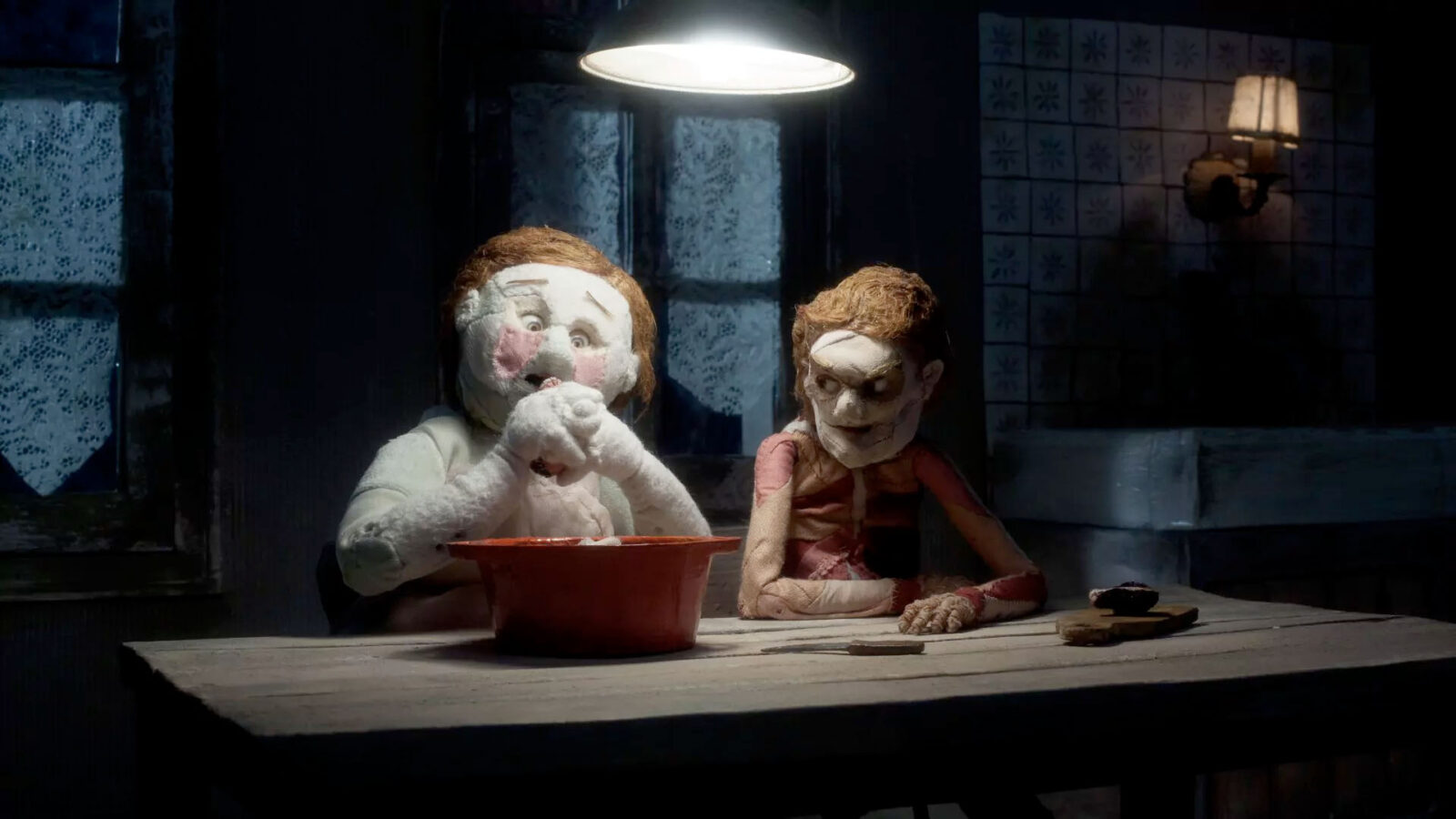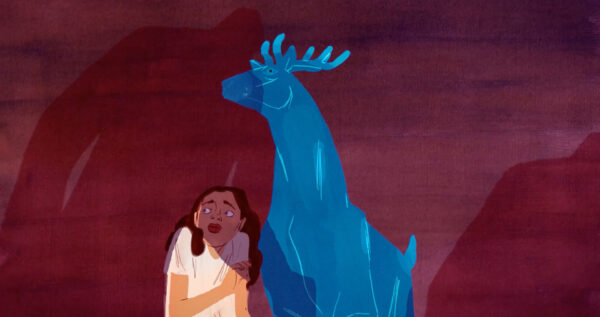If You Can Dream It, You Can Do It
Skinned
A gruesome and eerie stop-motion fairytale, aesthetically influenced by the Brothers Grimm

There are bonds one cannot break. Though people usually consider a link to be healthy and loving, at times it’s toxic or even destructive. Joachim Hérissé’s Skinned (2022) is an animation characterised by confusion and ambiguity. Few things are not up for debate: there are two women (Puffy and Skinned) conjoined at one leg, they live in a terrifying house, and they have a daily routine built on Puffy’s desires to feast on rabbits and knit stuff out of rabbit skin, completely disregarding Skinned’s wish to leave.
In an interview at Clermont Ferrand Film Festival, the director stated that this short is essentially a product of childhood nightmares and considers it a fairytale. The setting perfectly embodies such a label as to state that it looks haunted would be an understatement. The animation style adds to the spooky atmosphere as the fleshy appearance of the textile materials used amplifies the characters’ tangibility, which in turn emphasises the goriness of every violent development.
Like every other nightmare/fairytale, the short begins in medias res and doesn’t offer any explanations. In fact, even though the film is supposedly structured around the women’s routine, time is somewhat indiscernible. Occasionally, the tick of a clock takes over the sound design, but whenever the viewers are allowed to get a glimpse of this mechanical device, there are no clock hands to indicate the time.
Ambiguity is further built up, based on the women’s appearance and overall presence. On the level of narrative, Skinned is the protagonist—after all she is the titular character—and Puffy is the antagonist, the obstacle the skinny woman has to overcome for a happily ever after. This manifests first and foremost on a physical level: Puffy is heavier and consequently stronger; the power dynamic of the relationship favours her, as Skinned isn’t allowed to take a single step on her own. Simultaneously, Skinny’s appearance with her malicious stare and her flesh exposed is the stereotype of a villain. She’s the one who kills and skins the rabbits, so her character is permeated with a kind of savagery. Puffy, on the other hand, is rather cute with her red cheeks and her overall excitement with getting her way. There’s an innocent naivete in her clapping hands when she’s given her supper. She almost feels like a giant, whose childlike lack of maturity prevents her from understanding that her self-centeredness isn’t natural and that her clumsiness needs to be controlled, considering that she shares a part of her body with another person.
It should be noted that the film’s ghostly manor is surrounded by water, so the only means of escape is a boat that floats by every day. With Puffy’s refusal to aid in the escape, Skinned is framed as a prisoner coerced into following a certain schedule—she’s confined and the moment she diverts from her scripted behaviour, she’s punished. Her freedom can only be detected in dreams. There, Puffy’s body dissolves, and—puff!—she’s gone; Skinned is finally free.
With all this in mind, it’s safe to assume that the audience would empathise with Skinned and that Puffy is undoubtedly her rival. The story is built in such a way, that the only path one is forced to take is that of violence. So, eventually, Skinned wakes up to find Puffy murdered by her own hand. She cuts herself free and hides the body. She grieves. Finally, the coveted boat-ride to the unknown is possible, but she chooses to stay. With the antagonist vanquished, there’s no reason why Skinned would reject her happy ending. With every passing day, Skinned is overtaken by Puffy’s returning presence until the moment she trades places with her tormentor. Identity, then, becomes fluid and open for debate.
Taken merely as a nightmare, Skinned succeeds in creating a gruesome and eerie dream, whose disdain for clarity is understandable, if not mandatory. With a fairytale theme in mind—an aesthetic influenced by the Brothers Grimm is noticeable throughout—viewers have to take Skinned as a protagonist at face value. Her refusal to leave the premises once free from an abusive relationship, then, creates an issue for the story’s moral reading. For instance, the Little Red Riding Hood teaches children they shouldn’t trust strangers. Here, this particular universe seems to exist in order to imprison Skinned, leaving murder as the only means of escape. In taking this route, the protagonist literally ends up being the very thing she wished to run away from. But what is the meaning behind this ending? Is it that there’s no real freedom when it comes to abusive relationships, for example? It’s up to the viewers to decide.
Perhaps, it suggests that people are victims of their own minds. That even if there is a way out, there are times that they choose to stay trapped, spiralling out of control, unable to find an exit. Dreams do come true, even if people don’t want to admit it. But so do nightmares.
This text was developed during the European Workshop for Film Criticism #1—a tandem workshop set during Filmfest Dresden and Vienna Shorts—and edited by tutor Ricardo Brunn.
The European Workshop for Film Criticism is a collaboration of the European Network for Film Discourse (The END) and Talking Shorts, with the support of the Creative Europe MEDIA programme.








There are no comments yet, be the first!